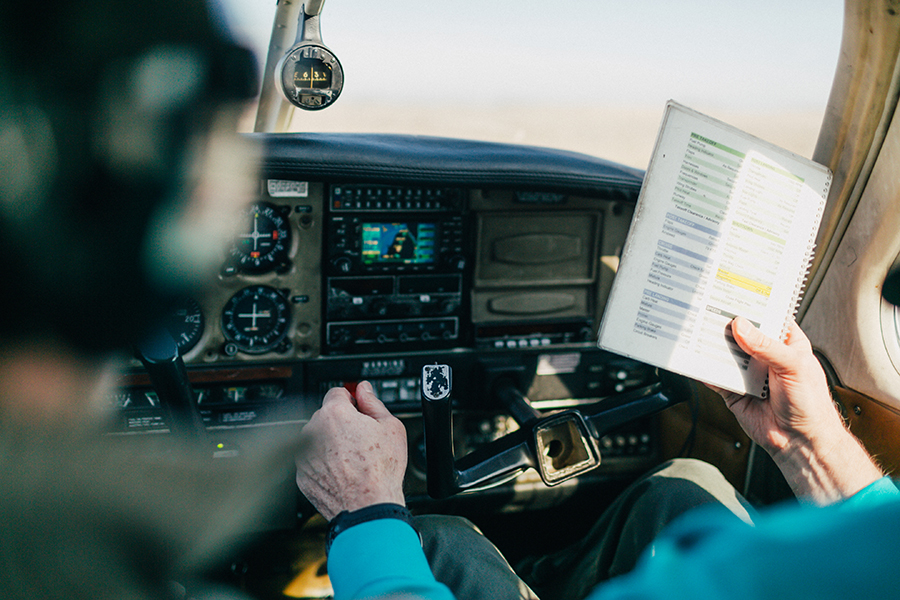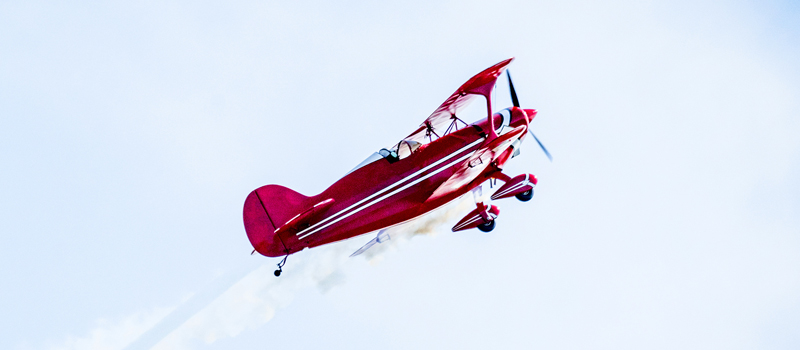-
What is a Flight Review - The Quick Answer
-
Flight Review for Private Pilots - What to Expect
- Theoretical Ground-Based Training
- Flight Exercises
-
How Often Do I Need a Flight Review?
-
Preparing for Your Flight Review - 5 Tips for Success
- 1) Go Prepared
- 2) Work With Your Instructor
- 3) Keep Calm. It's NOT a Test
- 4) Be Honest About Your Skills and Goals
- 5) Listen to the Debrief
-
Private Pilot Resources
-
Final Thoughts
As pilots, we all want our skills to be as sharp as possible. Aviation regulatory bodies want them to be sharp too! For this reason, you’ll need to complete a flight review to act as a pilot in command of an aircraft. Private pilots are often daunted. However, you needn’t be. Today we will look at what a private pilot flight review involves and why it is necessary, and even offer some tips to ensure you get the most from this valuable exercise.
What is a Flight Review – The Quick Answer
A flight review is a two-yearly check that will assess your knowledge and handling skills in an aircraft. It consists of a minimum of 1 hour of ground training and 1 hour of flight training. The aim is to assess a pilot’s competency in aviation theory and handling skills.
However…
It is important to note that the flight review is not a check-ride or test for private pilots. You can consider your flight review as a great opportunity to discover your strengths and identify weaknesses, all under the watchful eye of a certified flight instructor.
In short…
A private pilot flight review will make you a better pilot. So, you should look forward to it!
Flight Review for Private Pilots – What to Expect
What does a flight review involve?
Well, according to the FAA regulations, the minimum requirements are as follows: –
- 1 hour of ground-based training, reviewing theoretical knowledge
- 1 hour of flight training
But what does that cover? Here’s a detailed breakdown of what you’ll need to know for your flight review…
Theoretical Ground-Based Training
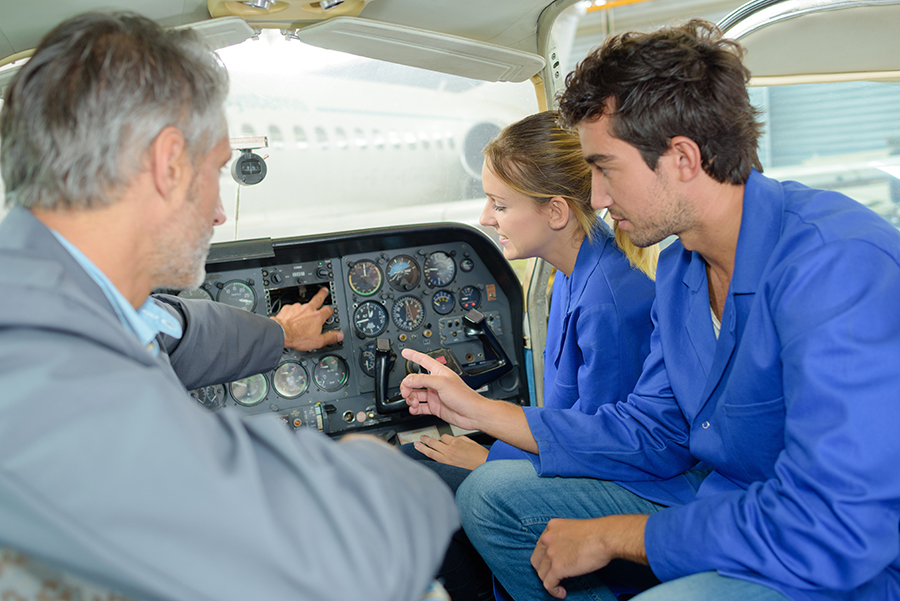
In short, for this section of the flight review, you can expect to complete an overview of the rules and procedures given in CFR 14, part 91.
That’s a lot of information to learn, right?
Yes… However, it is important to remember this is a flight review, not a test, and most of the information you’ll discuss will be things you should already know. You can consider this a ‘brush up’.
Suppose you haven’t flown for a while or particularly regularly. In that case, it might seem a little daunting (and let’s be honest, when studying such a broad topic, it can be hard to know where to start).
So, we’ll make it easy for you.
Here’s a table, with CFR and Aeronautical Information Manual references for the areas that you will definitely want to study prior to your flight review.
It is split into 3 parts.
- You as a Pilot
- The Aircraft
- Your Environment
| Area Covered | 14 CFR Reference | Aim Reference |
| Pilot | ||
| Flight experience | 61.57 | |
| Responsibility | 91.123 | |
| Pre-flight actions | 91.103 | |
| Safety Equipment | 91.107 | |
| Alcohol and drugs | 91.17 | |
| Supplemental oxygen | 91.211 | |
| Fitness to fly | Chapter 8 | |
| Aircraft | ||
| Airworthiness general | 91.7 | |
| Certification | 91.203 | |
| Maintenance responsibility | 91.403 | |
| Maintenance records | 91.417 | |
| Aircraft inspection | 91.409 | |
| Environment | ||
| Airport markings | Chapter 2 | |
| Operations | Chapter 4 | |
| Traffic pattern | 91.126 | |
| Altimeter setting procedures | Chapter 7 | |
| Minimum altitudes | 91.119 | |
| Types of Airspace | Chapter 3 | |
| Emergency traffic rules | Chapter 6 | |
| ATC Procedures | Chapter 5 | |
| Weather | Chapter 7 | |
| Navigation procedures | Chapter 1 |
When preparing for the ground-based section of your flight review, pay particular attention to appendix 3, and use it as a framework to study effectively.
It’s literally a checklist of the things in Part 91 that you will need to know!
And, there’s more…
Remember how we said your flight review is not a check ride? Well, we meant it. Your instructor will try their best to ensure you get the most out of your flight review. As part of this process, they will be keen to know some relevant information about you as a pilot! That way, they can tailor the flying portion of the review effectively.
Here are some areas that will be covered during the ground-based section of your flight review: –
- The type of pilot certificate you hold
- Ratings and endorsements
- Your total experience
- The types of aircraft you have flown
- The type of flying you normally do
- Your personal minimums
Depending on the nature of the review, you can often expect to be asked to plan a short cross-country route, after which your CFI may ask you a few questions to check your understanding of various things you might encounter along the way.
Flight Exercises
Following the ground-based briefing and review, you’ll then make your way to the aircraft to complete the minimum one hour of flight training that forms the last part of your review.
And…
Here’s where it gets a little less clear-cut.
Why?
According to CFR 14, Subpart D, chapter 61, the review will cover: –
“Maneuvers and procedures that, at the discretion of the person giving the review, are necessary….”
Note the underlined section of the above.
The person giving the review will decide what exercises they want to see. However, it is normal practice that the flight exercises will follow the things you discussed during the previous hour’s ground training.
Airplane Handling – The Physical
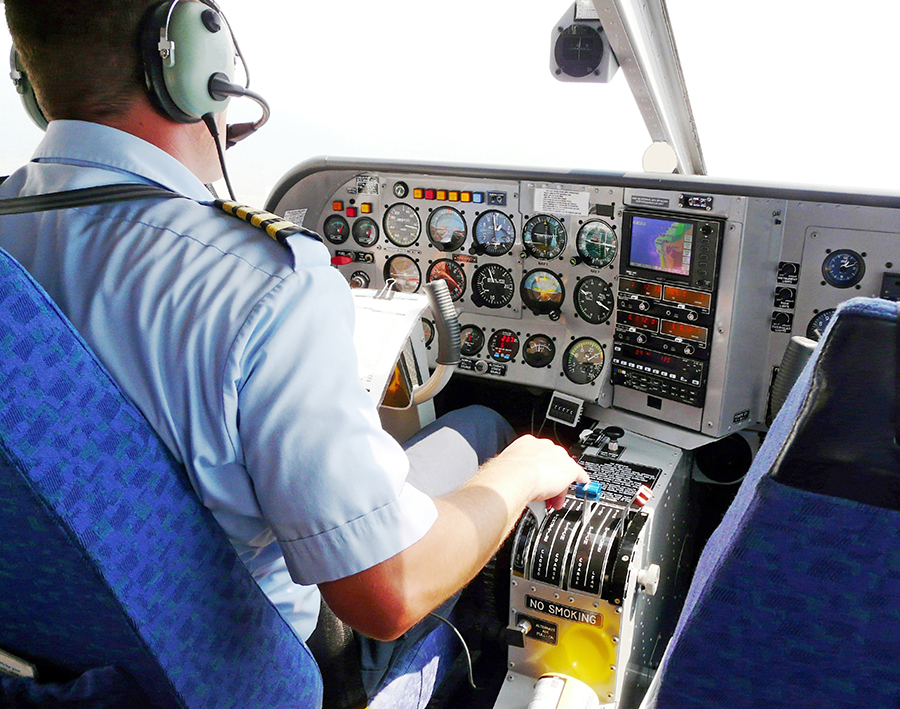
As any good aviator will tell you, when flying, the general order is to “aviate, navigate, and communicate”.
During your flight review, you will be expected to demonstrate that you can do all three in the correct order.
One area that can’t be faked, hidden, or covered up is your ability to actually fly the airplane.
We are, of course, talking handling skills. Below you’ll find a general checklist of areas that may be worth reviewing. Take a look and see if you can identify any areas that you feel like you’d like to work on: –
- Take off
- Climbing
- Descending
- Straight and level flight
- Turns
- Steep Turns
- Slow Flight
- Stalls
- Spins
- Landing (in different configurations)
- Engine out procedures
- Low flight
- Instrument flying
- Recovery from unusual attitudes
- General navigation
- Dead reckoning
Technical Knowledge – The Mental
Being a great aviator isn’t all about being a ‘stick and rudder’ person. That’s only half the story.
The best aviators can back up their excellent handling skills with a rock-solid theoretical foundation.
According to the Aircraft Owners and Pilots Association, fighter pilots perform training drills where they attempt (while safe on the ground) to locate the switches and knobs in the cockpit with their eyes closed!
Imagine knowing your operating environment that well!
Aside from looking like a cool fighter ace, there is value in the above approach (you don’t need to learn the cockpit with a blindfold to be a good pilot, by the way…)
Try and take a general overview of the above (albeit extreme) approach…
Having expert knowledge about your equipment will free up capacity and brain power to concentrate on other things (such as nailing those steep turns).
It is well worth reviewing your airplane flight manual to refamiliarize yourself with the limitations and ‘finer points’ that will demonstrate what an excellent aviator you are.
Want a quick guide to things that are worth knowing?
We would suggest reviewing the following for your flight review: –
- Characteristic speeds
- Aircraft systems
- Airspeed indicator markings and arcs
- Fuel consumption and capacity
- Mass and balance and center of gravity
- Aircraft performance
- Rates of climb
- Technical Data
- Emergency procedures
- Normal procedures and checklists
- Maneuvering limitations
- G – Limits
Decision Making
Part of being a good pilot is making the best calls when necessary.
Notice something?
We said ‘best‘ and not ‘right’…
Why?
Well, ask 100 different pilots what they’d do in a given situation, and you’ll undoubtedly get 100 different answers! The beauty of flying is that you are rarely presented with the same situation twice!
Our point?
Often there is no ‘right or wrong’ answer.
However, making the best decision can normally ensure a safe and successful outcome.
How can you achieve this during your flight review?
Private pilots can often benefit from following a decision-making framework to help get them going on the correct course…
There are countless tools out there that will help. Let us introduce you to one such tool, “T-DODAR”.
Remember this acronym and structure your decision-making around it until it becomes second nature. It looks something like this:
T – Time
When faced with a decision, how long do you have to make up your mind?
Emergency situations require a quick decision. Other occurrences will afford you more time.
Decide before you start planning how long you have to make a decision.
D – Diagnose the problem
Take in the bigger picture, and look at all sources of information.
Exactly what is the problem? Is there anything else you can use to confirm what you first suspect?
Once you know what you are dealing with, you can plan accordingly.
O – Options, consider all possibilities
The first and most obvious solution isn’t always the best.
The key to making a good decision?
Give yourself plenty of options! Once you have two or three ideas, you can weigh up the pros and cons of each. The one with the most pros and the highest chance of a successful outcome is the one to go for.
D – Decide on a course of action
You’ve had good thinking, are aware of a problem, and have come up with various solutions. It is now time to pick one.
Once you’ve established a starting point, you’ll be able to plan more effectively.
A – Assign and arrange tasks in order of importance
Now you know where you are going, you can start to plan.
Again, take a good general overview of what you’ll need to do. Prioritize tasks and, if necessary, make a list that you can check off as each goal is met. It might look something like this: –
- Get the weather for my destination
- Draw a diversion line on the map
- Check the charts to see if anything will catch me out on the approach
- Brief myself (and the instructor) on what I am going to do
- Check the fuel to ensure sufficient endurance
- Radio the tower to tell them my intentions
R – Review the plan
Ever come up with a rock-solid plan, then been ‘wrong footed’ by something at a later stage?
Yeah, we’ve all been there.
Once you’ve decided, why not spend a minute reviewing what you’ve decided to see if there is anything you can do better? It’s better to use another minute to make sure your decision is good than to press on and cost yourself time later when it turns out the decision wasn’t the best.
How Often Do I Need a Flight Review?
According to the Federal Aviation Administration, private pilots must complete a flight review every 24 months to act as pilots in command. Private pilots can find more information regarding flight reviews in FAA Advisory Circular 61-98D.
Preparing for Your Flight Review – 5 Tips for Success
For private pilots, flight reviews are variable experiences; aside from the general outline given above, each will be slightly different. You can use some ‘broad brush’ strokes to ensure you get the most out of your flight review.
Here are the things to do to be a better pilot: –
1) Go Prepared
As you’ll already know, all flight time is valuable. You want to make the most out of every hour you fly.
The best way to do this during your flight review is to be prepared. Studying and brushing up on weaker areas before attending your review will be beneficial in the long run.
Wouldn’t it be a shame if you ended up wasting time discussing basic fundamentals that could have been learned at home instead of going through your weak areas and getting them squared away?
2) Work With Your Instructor
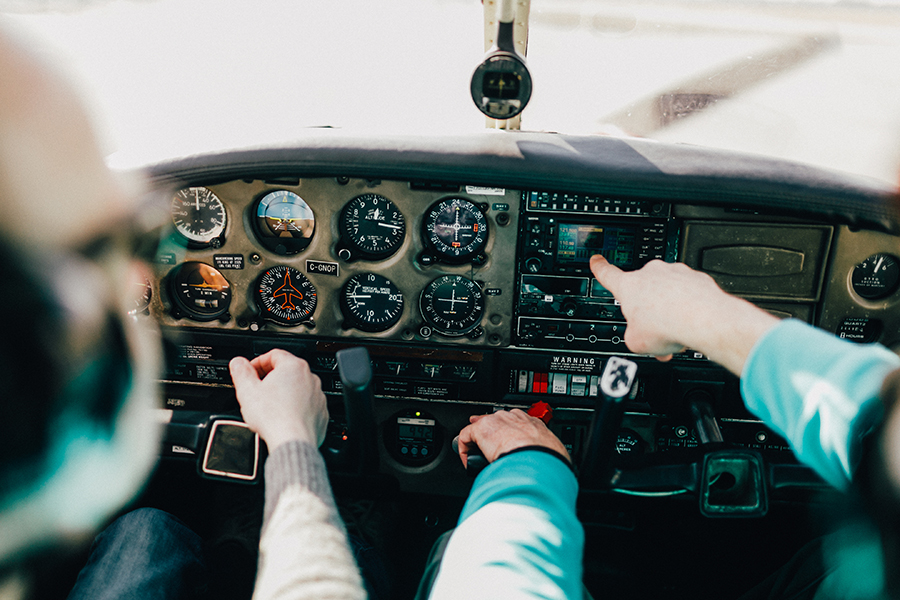
Your flight review puts you in a unique and advantageous position.
You get to be pilot-in-command and gain a valuable asset in having an instructor sit with you, both in the classroom and in the air.
The exercises conducted during your flight review are decided by your instructor. However, provided you’ve arrived prepared, your flight review should be a collaborative effort to develop your skills and make every area of your flying as good as possible.
3) Keep Calm. It’s NOT a Test
Flight tests are always somewhat daunting. However, it doesn’t need to be this way with a flight review. You can consider it very much training. At the very worst, the instructor may suggest that a little further flight training is required to bring you up to speed.
And before we forget…
The length of your flight review is an hour minimum. For those who fly often, this would be ample time. However, if it has been months since you’ve touched the controls, manage your expectations. You may be required to fly longer or more often to remove that fine layer of ‘rust’ on your otherwise excellent skills.
4) Be Honest About Your Skills and Goals
One hallmark of a really great pilot is humility and humbleness.
By going into your flight review with the right mindset, you’ll be in a good place to make the most of the experience.
Be honest about your ability and what you want to achieve. Here’s a quick list of things to consider. Ask yourself the following questions and be truthful about the answers. You might surprise yourself: –
- What am I good at when flying?
- What am I not so good at?
- If I could practice three things, what would they be?
- What would be my nightmare scenario when flying?
- What was my best-ever flight?
- What was my worst flight?
- What do I really want to achieve as a pilot?
Been candid with your answers?
What did you learn? We reckon you’ll have at least one thing now that you can ask your instructor about!
5) Listen to the Debrief
Instructors aren’t there to make you feel bad or to give you a ‘ticking off’ for doing the wrong thing (well, hopefully not). Their sole aim is to help you improve as a pilot.
So…
When they tell you something, listen to them.
As part of your flight review, you will be debriefed on the areas you did well on and not so well.
Our advice?
When being debriefed, take notes.
It is easy to walk out of the debriefing room and say, “I’m good for another two years,” before promptly forgetting everything you were told.
The best pilots will go away feeling they have learned something. Why not be one of them?
Private Pilot Resources
Some great resources and sources of information will help you prepare for your flight review. Here’s a list of places you could go to learn more and get prepared: –
- Code of Federal Regulations Title 14.
- FAA Guide for CFI’s in Conducting a Flight Review
- FAA Flight Review Prep Guide
- FAA Advisory Circular 61-98D (Chapter 4)
- Some Great Online Courses…
Final Thoughts
A flight review for private pilots should be seen as adding ‘polish’ to the skills you already have in your flight bag. It is a collaborative effort between you and your instructor that also ensures that you, as a pilot, retain your proficiency. The above guide has shown you what’s involved and some key tips for succeeding. Want to learn more? Here at Pilot institute, we are experts in helping you pass with flying colors. Don’t believe us? Check this out.
